Hi how are you? Today’s topic is “Noto Peninsula” was damaged repeatedly by big earthquakes, one of whose magnitude occured on January 1st, 2024 was a little over 7.
Nevertheless, “the future of Suzu Pottery will continue if the kiln remains” – American-born female potter’s thoughts on rebuilding her studio.
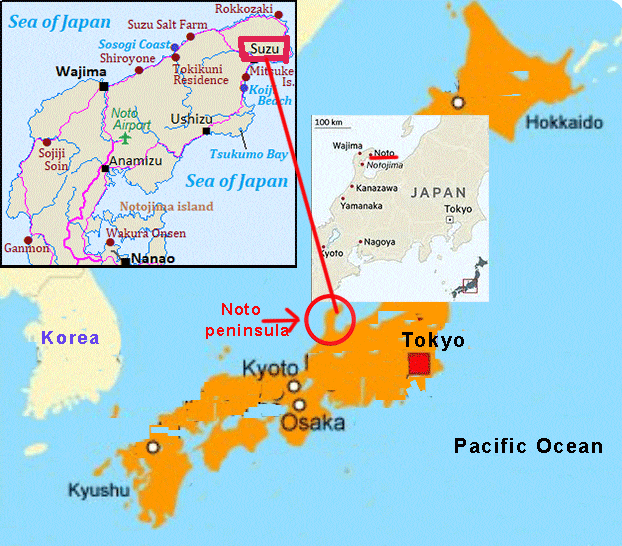
Caroline Watanabe, 59, an artist of traditional Suzu pottery in Suzu City, Ishikawa Prefecture, is working to rebuild her studio.
In particular, there is an active fault under the city of Suzu, where Caroline, the main character of this story lives on the submarine active fault.
It is pointed out that there is a possibility that water and other fluids from the Pacific Plate have accumulated and triggered a slip in the undersea active fault, leading to major and great earthquakes.
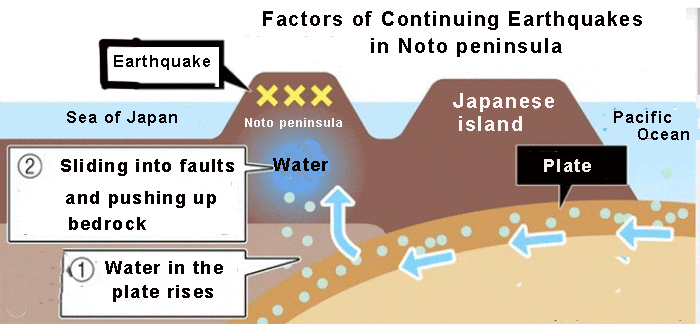
Magnitude 7
Therefore, several earthquakes of magnitude 6 or bigger and greater have been observed in the vicinity of Suzu City, especially since December 2020, counting thousands of earthquakes including small ones.
Her house was naturally destroyed by the earthquakes and above, torrential downpours, but her kiln barely survived.
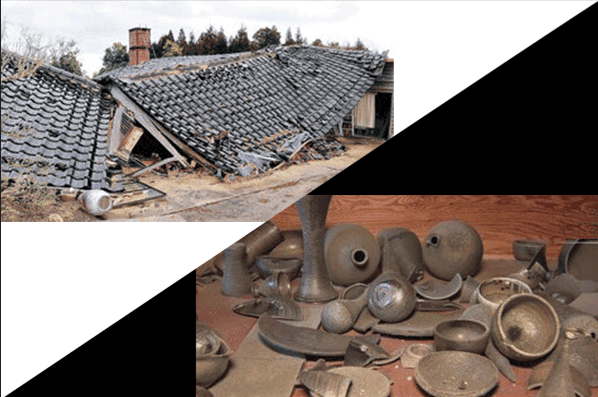
In mid-December 2024, Caroline was busy clearing away wooden boards and construction tools and carrying in her belongings around the kiln in Wakayama Town in the city amid heavy, watery snowfalls characteristic of the region.
She said, “I have fond memories of this kiln because I built it with my late husband.”
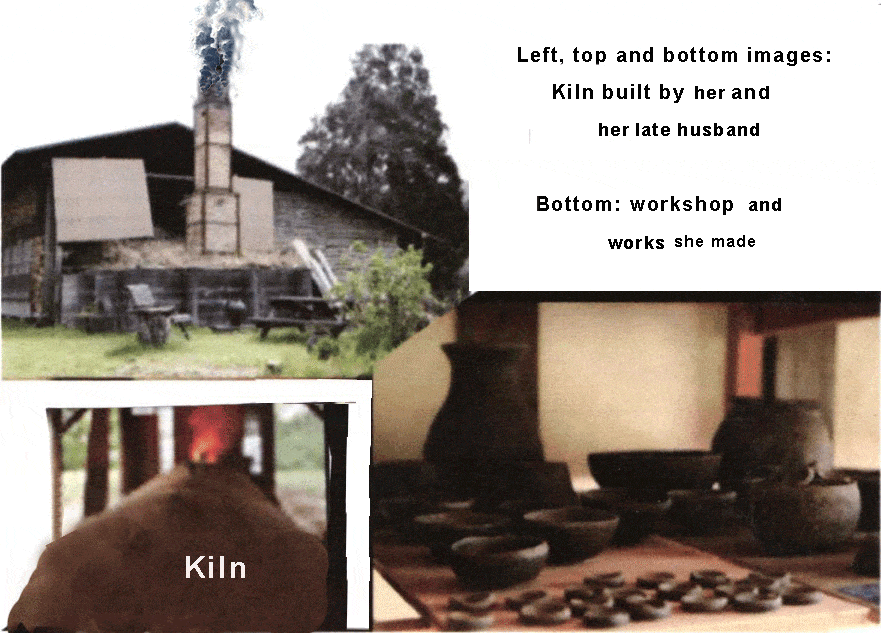
The following is her memoir,
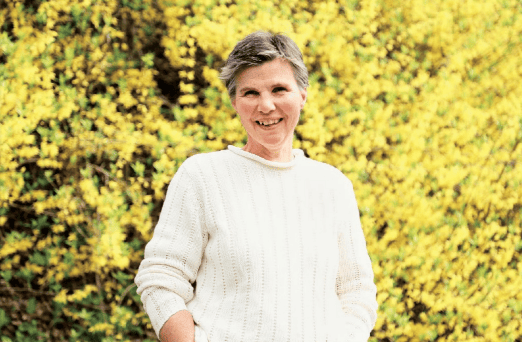
Creating the “core” that is so important to us as people
Caroline is from the United States. She came to live in Suzu City in the Noto region by chance. This land, where she is in contact with the blessings of nature and where traditional culture thrives, teaches her the importance of “compassion” for the region, people and living things. Caroline says that this is what creates the “core” that is so important to us as people.
Suzu ware
Produced in the area around Suzu City, Ishikawa Prefecture, from the mid-12th century to the end of the 15th century . One of the most representative pottery styles of medieval Japan, it descends from SUEKI, which was introduced from the continent(Korea, China).
The iron-rich clay of Suzu is fired using a technique called smouldering, and no glaze is used, resulting in a grey-black texture. It was revived by Suzu City in 1976, and in 1989 it was designated as a traditional craft by the prefecture.
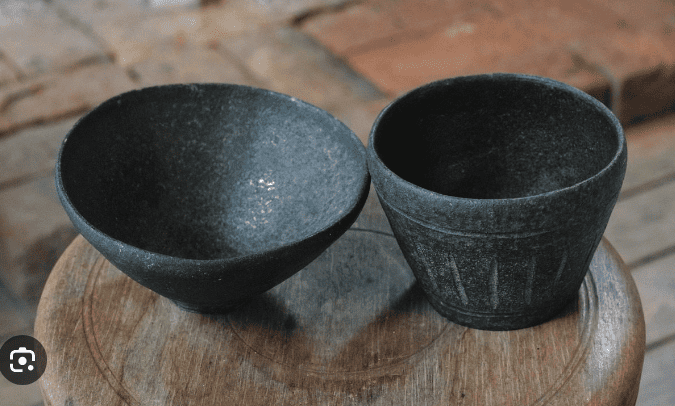
Note: Sueki: Grey-black earthenware made from around 800~1100. Formerly also written as “pottery”. Fired on a potter’s wheel or in a climbing kiln, with a reducing flame at a high temperature of over 1000℃. Until then, Hajiki pottery was mainstream, but because it was fired outdoors at low temperatures without being placed in a kiln, it was relatively soft and water-permeable.
Life in Noto enjoying self-sufficiency, bartering where everything is
I have been living in Suzu City, at the tip of the Noto Peninsula, for about 30 years. For over a decade, I have been making Suzu ware, a simple ceramic work that does not use glazes. It takes a year to work on it. From spring to autumn, I prepare firewood and clay, and in winter I create my works, and in spring I fire them in the kiln.
The mountain area of Suzu City has a climate that is severe cold in winter and mild in spring, so I prepare 15 tons of firewood for the kiln and 5 tons for heating in winter, for a total of 20 tons. Because it is so difficult to prepare firewood, I can only fire the kiln once every two years.
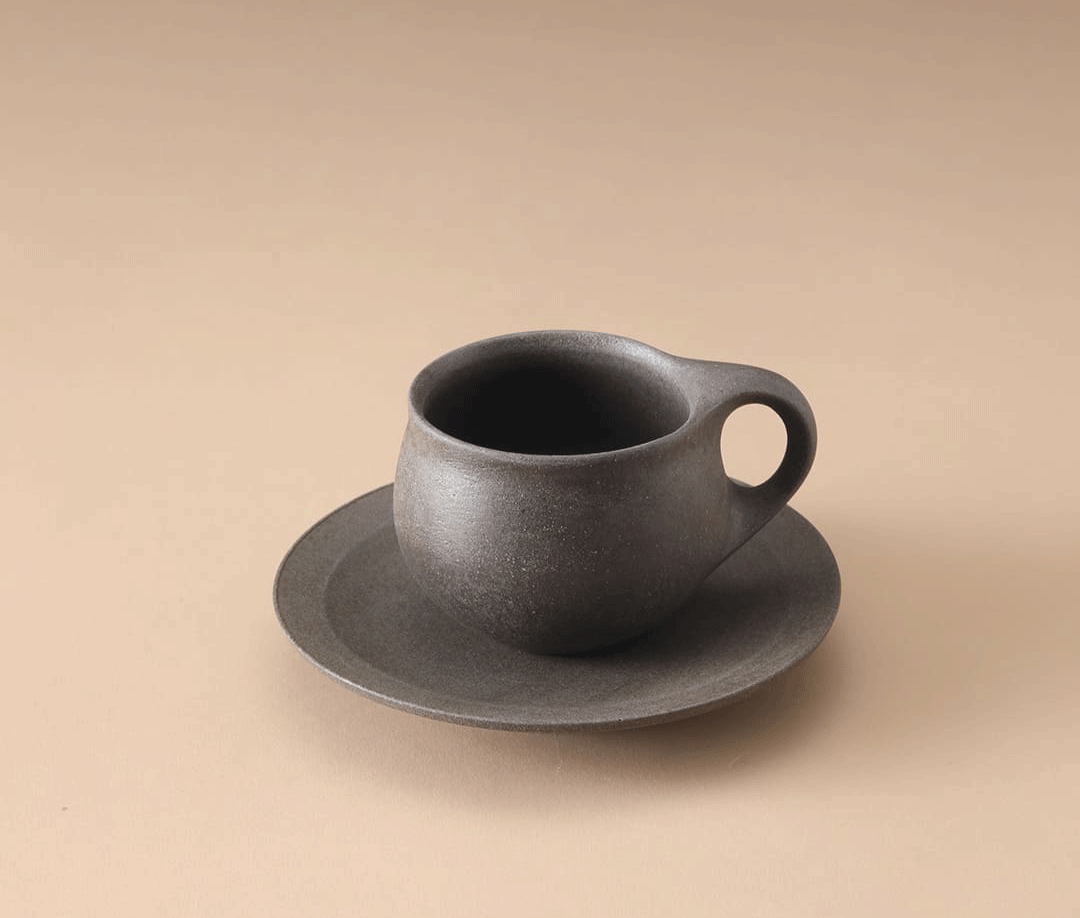
The kiln is fired for 5 days. I bake 150-200 pieces of work, from chopstick rests to large vases. At the same time, I also do beekeeping and work in the rice fields. Having something to do for each season and completing everything in a year is nice because it gives you a sense of unity with nature.
If I get bored, I can just do another job, so I’m not bored every day. I have never lived in one place for more than four years since I was a child, but the reason I have been living here for about 30 years is because I have everything I need. There is abundant nature surrounded by the sea and mountains.
There is also spring water. I don’t have to go shopping; I can get mushrooms, wild plants, vegetables, eggs, brown rice, etc. by picking them in the mountains, growing them in the fields, or bartering with my neighbors. I fill my refrigerator with wild boar, goat, duck, and other gifts that I have butchered myself.
I guess bartering is the main source of income for Suzu ware as well, rather than cash? A person who works for a fishery cooperative asked me to give them a gift as a commemorative gift for his retirement trip, but the person who helped him is a lumberjack, so instead of giving cash, I asked him to maintain our mountain. I enjoy living like this every day.
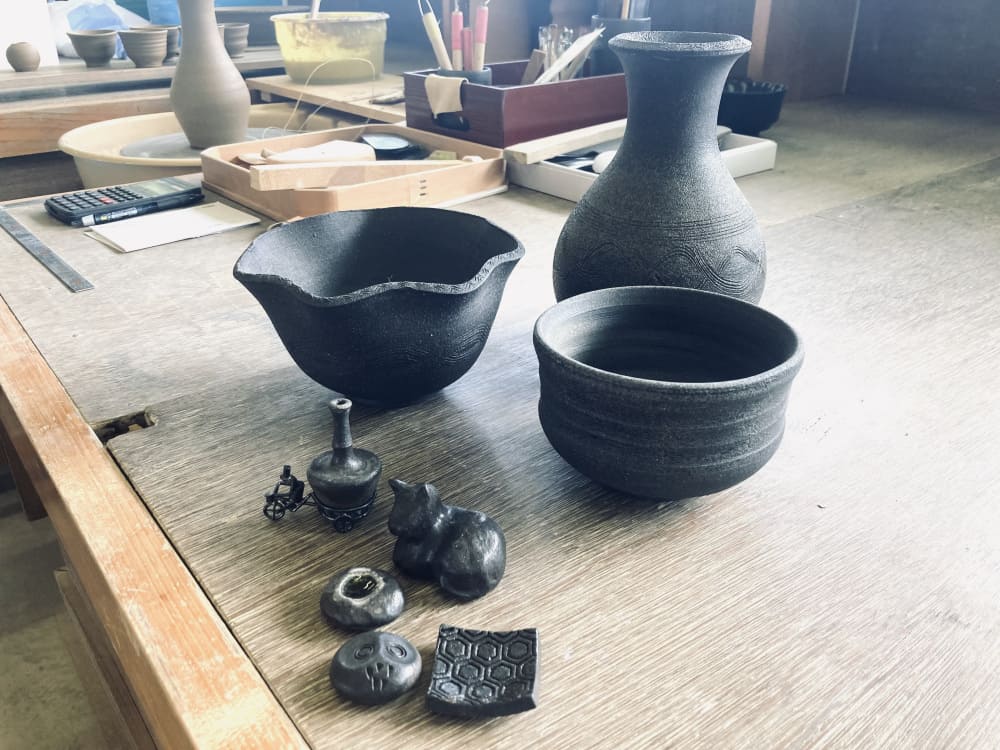
The reason for settling in Japan was New York
My father is American and my mother is Canadian. They met and married in Japan after the war. My father was a missionary and traveled around the world as he was asked, and our four children were born in New York, Hokkaido, Canada, and New Jersey (me) in the United States. I first came to Japan when I was 17 years old.
My father became a pastor at a church in Hakodate, Hokkaido and after graduating from high school, I was the only one who came with him. After a year of studying for entrance exams, I went on to Columbia University in the United States. I majored in Japanese literature in order to learn more about the Japanese language I had learned. I studied the English-translated well-known Japanese old documents.
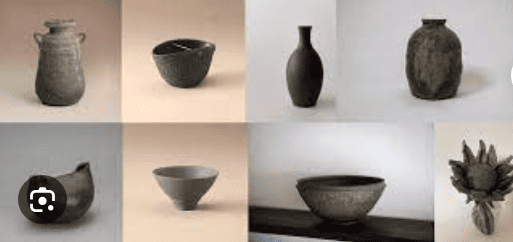
I decided to settle in Japan in 1986, when I was a fourth-year university student, and I met my future husband, Koji Watanabe (Haru). There was a pottery exhibition at the beauty salon where an acquaintance of mine worked, and he was there. I don’t remember the works, but I thought he was a very unique Japanese person.
In fact, I studied abroad at a university in Tokyo for a year when I was a third-year university student, but there were few classes that interested me, and the Japanese and international students were separated, so it was boring and unstimulating. So I returned to New York and met Haru. I thought, “Wow, there are interesting Japanese man in New York!”
Haru returned to Japan from New York two weeks after we met. He went back to his parents’ house in Osaka, saw a solo exhibition of Suzu ware at a gallery, and headed to Suzu, where he found his master and decided to live. He sent me several letters, writing about catching turban shells at the sea and listening to jazz concerts in the mountains.
So I thought I might try living in the countryside in Japan again, and in November 1987 I came to Suzu. At first, he was devoting himself entirely to pottery and I didn’t know anyone, so it was a tough winter. But as the winter passed and I made more acquaintances, it started to get a little more fun. I had been working part-time since I was 13 to earn money for school, so I started English conversation classes so I didn’t have to rely on Haru, but I also enjoyed interacting with children.
After that, in 1988 I got married to Haru. We finally found land to build a kiln and moved from the city of Suzu to where we are now. Our first son was born in 1993, but Haru died of esophageal cancer at the age of 49 in 1998. Before he died, Haru told me, “Go back to America. The nature is too harsh for you to survive alone,” but I didn’t have the choice to go back to America. I didn’t have a place to go back to, but my child was only four years old and I thought this was the best place to raise him.
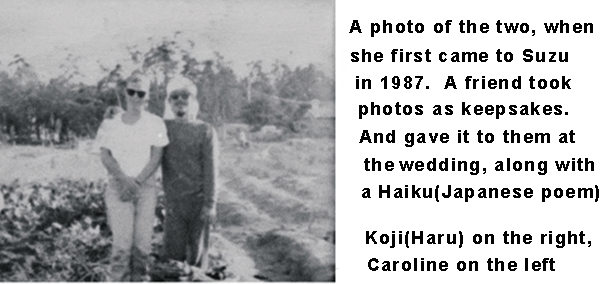
I started making Suzu ware after Haru passed away. I loved firing the kiln because it felt like a festival, and I wanted to do that. I used his work every day, so the images just kept coming to me. Of course, it doesn’t always turn out exactly as I imagined, but I never get bored of it.
My son has been going to school in the US since he started middle school. He graduated from college last year, so I don’t need to send him money, but I told him not to come back until he finishes paying off his student loans. He might come back someday, or he might never. But I hope this is my son’s “hometown.” I had a lot of fun moving between different cities and countries, but I didn’t have a hometown.
I feel happier with each new thing I do
In a letter I received from Haru a long time ago, he wrote, “Suzu has the satoyama(village-vicinity mountain)scenery that I thought would no longer be left in Japan.” That’s right, and living here is very stimulating for me every day. Although it is a village of only 13 houses, everyone works hard in the rice fields and fields, repairing their houses and work sheds and using wood cut from their houses.
And when they can’t do something by themselves, they help each other. In the past, funerals were held at home, and the villagers went to help for three days. They do everything in the community. I have been gradually getting closer to the lives of the local people for about 30 years, but even so, adding one thing at a time gives me an amazing sense of happiness.
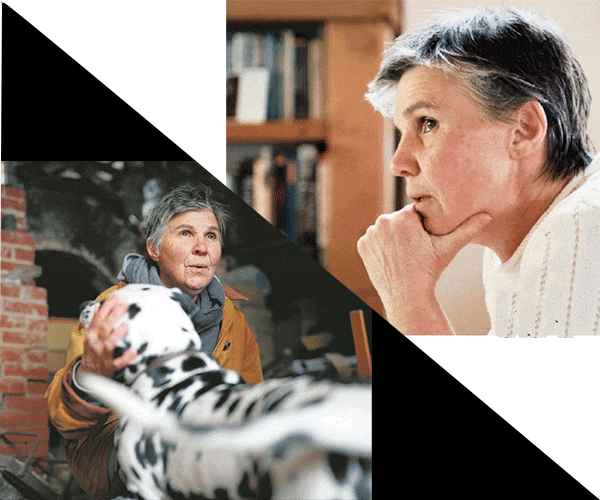
This is my fourth year in the rice fields, and the feeling I get when I eat the rice I grew myself is indescribable. When I walk along the footpath in my rice field shoes, I am filled with the joy of being a Noto person.
Suzu ware is a part of me. Suzu ware, rice field work, and translation work are all one set. It’s not like I can leave out any one of them. There are things I want to do every day, and of course it’s impossible to achieve everything, but I still want to move forward step by step.
I was once asked to give a lecture at a junior high school, and while I was preparing I read Miyazawa Kenji’s “Even in the Rain” and was struck by the fact that my parents were living just like that. They lived a simple life and traveled around the world for others. I want to be like my parents. In the future, I will not only teach English to children, but I am also working hard to convey the charm of Satoyama to a wider range of people.
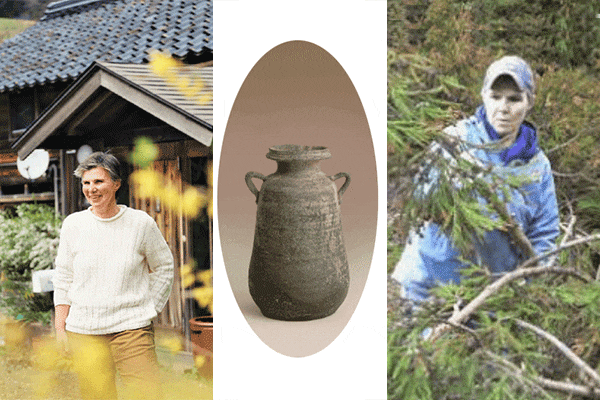
I think the reason young people can’t find what they want to do is because they don’t go out. It’s a waste to be in front of a computer or cell phone all the time. I think if you take action, you will naturally find something. The quickest way is to travel. See the world. Meet people. Learn about diversity. If you do that, you will find fun things too.
But fundamentally, I think that as long as you have a “core” as a person, you can do any kind of work or live any way you want. That is, aim for a life that values compassion for humans, animals, and all living things, as well as consideration for the local community and the entire earth. If you do that, I feel like you will be able to see many things.
Finally, here is a video of the entire process of making Suzu ware from Noto clay to firing. Please take your time and enjoy. Thanks for watching.
As a lover of nature, Caroline will continue to pay attention to earthquakes, torrential rains, typhoons,and heavy sonow etc., and will continue to hone her pottery-making skills, looking forward to seeing more of her wonderful creations.
We have another article of Pottery, please enjoy it which is well worth visiting, have a nice day

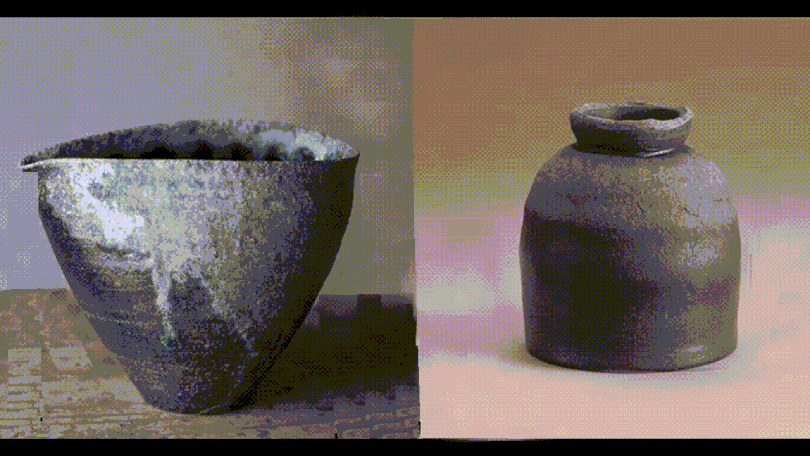

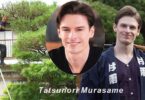
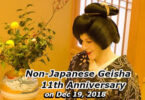

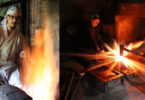

Leave a Comment